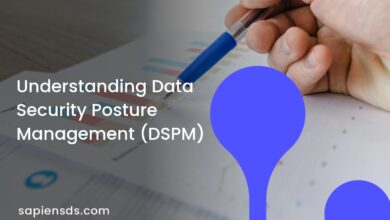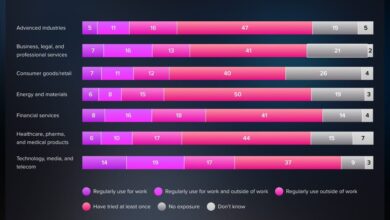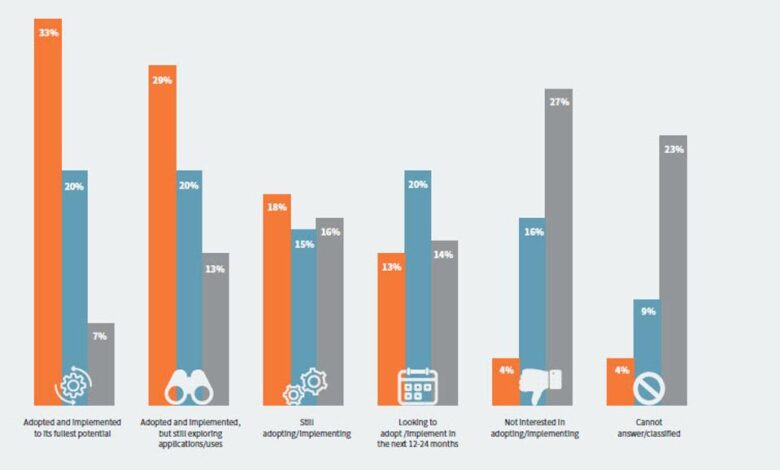
AI in Cybersecurity Exploring Opportunities and Dangers
AI in cybersecurity exploring the opportunities and dangers is a rapidly evolving field, brimming with both incredible potential and significant risks. On one hand, artificial intelligence offers powerful new tools to detect and prevent cyberattacks, automate vulnerability management, and enhance security information and event management (SIEM) systems. It promises to revolutionize how we approach cybersecurity, making our digital world safer and more resilient.
But, on the other hand, the same technology that protects us can be weaponized by malicious actors, creating new and unforeseen threats. The potential for bias in AI algorithms, the risk of misuse for offensive purposes, and the ethical implications of increasingly autonomous security systems are all critical concerns that demand careful consideration.
This exploration will delve into the multifaceted world of AI in cybersecurity, examining its capabilities and limitations across various applications. We’ll explore how AI is transforming threat detection, vulnerability management, and incident response, while also addressing the ethical, societal, and workforce implications of this transformative technology. From securing the ever-growing landscape of IoT devices to safeguarding data privacy, we’ll analyze the opportunities and dangers, aiming to provide a balanced and insightful perspective on this crucial intersection of technology and security.
AI-Powered Threat Detection and Prevention
The integration of Artificial Intelligence (AI) into cybersecurity is revolutionizing how we approach threat detection and prevention. AI algorithms, with their ability to process vast amounts of data and identify complex patterns, are proving invaluable in combating increasingly sophisticated cyberattacks. This enhanced capability allows for faster response times and a proactive approach to security, moving beyond the reactive measures of traditional systems.AI algorithms analyze network traffic by examining various data points, including packet headers, payload content, and network flow patterns.
Machine learning models are trained on massive datasets of known malicious and benign activities, enabling them to identify anomalies and deviations from established baselines. This analysis goes beyond simple signature matching, allowing for the detection of novel and zero-day attacks that traditional methods often miss.
AI-Powered Security Tools
Several types of AI-powered security tools are employed for threat detection. These include Intrusion Detection and Prevention Systems (IDPS) enhanced with machine learning, Security Information and Event Management (SIEM) systems incorporating AI for threat correlation and prioritization, and endpoint detection and response (EDR) solutions that leverage AI for anomaly detection on individual devices. Furthermore, AI is used in vulnerability scanners to identify potential weaknesses in systems and applications more efficiently and accurately than manual processes.
These tools work in concert, providing a multi-layered defense against cyber threats.
Signature-Based vs. AI-Based Anomaly Detection
Traditional signature-based detection relies on pre-defined patterns of known malicious activity. While effective against known threats, it is ineffective against zero-day exploits and novel attack techniques. AI-based anomaly detection, on the other hand, learns the normal behavior of a system or network and identifies deviations from this baseline as potential threats. This makes it far more effective at detecting unknown attacks.
While signature-based detection provides a fast and relatively simple method for identifying known threats, its reliance on pre-existing signatures is its major limitation. AI-based anomaly detection, although computationally more intensive, offers superior protection against evolving threats.
AI Preventing a Zero-Day Exploit: A Hypothetical Scenario
Imagine a sophisticated zero-day exploit targeting a financial institution’s internal network. Traditional signature-based systems would be completely blind to this attack. However, an AI-powered system, constantly monitoring network traffic and user behavior, might detect subtle anomalies. For instance, unusual communication patterns to an external IP address, or unusual access attempts to sensitive databases, could trigger an alert. The AI system could then analyze the suspicious activity in real-time, correlating various data points to identify the exploit before it causes significant damage.
It might, for example, notice a previously unseen pattern in data packets or unusual user login attempts from an uncommon geographical location. This allows for immediate containment and mitigation of the threat, preventing data breaches and financial losses.
Response Times: Traditional vs. AI-Powered Systems
| System Type | Threat Identification | Response Time | Mitigation Time |
|---|---|---|---|
| Traditional Signature-Based | Hours to Days (for unknown threats) | Minutes to Hours | Hours to Days |
| AI-Powered System | Seconds to Minutes | Seconds to Minutes | Minutes to Hours |
AI in Vulnerability Management
The ever-evolving landscape of cybersecurity threats necessitates a proactive and intelligent approach to vulnerability management. Traditional methods often struggle to keep pace with the sheer volume and sophistication of modern attacks. Artificial intelligence (AI) offers a powerful solution, automating many aspects of vulnerability identification, assessment, and remediation, ultimately strengthening an organization’s overall security posture.AI significantly enhances vulnerability management by automating tasks that were previously time-consuming and error-prone for human analysts.
This allows security teams to focus on more strategic initiatives and respond more quickly to emerging threats. The integration of AI into vulnerability management is no longer a luxury but a necessity for organizations of all sizes facing increasingly complex cyber threats.
Common Vulnerabilities and AI-Driven Mitigation
Cybercriminals frequently exploit common vulnerabilities such as SQL injection, cross-site scripting (XSS), and insecure direct object references (IDORs). AI algorithms can analyze vast amounts of data from various sources, including network traffic, system logs, and vulnerability databases, to identify patterns indicative of these and other known vulnerabilities. Machine learning models can be trained to recognize subtle anomalies that might escape human detection, predicting potential exploits before they occur.
AI in cybersecurity is a double-edged sword; it offers incredible potential for threat detection and response, but also presents new vulnerabilities. Building secure AI systems requires robust development practices, and that’s where the speed and efficiency of domino app dev, the low-code and pro-code future , become incredibly relevant. Ultimately, the future of secure AI depends on how effectively we leverage these advancements while mitigating the risks they introduce.
For example, an AI system might detect unusual database queries that suggest a SQL injection attempt, triggering an alert and allowing for immediate remediation. This proactive approach significantly reduces the window of vulnerability and minimizes the risk of successful attacks.
AI in Automated Vulnerability Scanning and Penetration Testing
AI accelerates and improves the effectiveness of vulnerability scanning and penetration testing. Traditional vulnerability scanners often produce a large number of false positives, requiring significant manual review. AI-powered scanners utilize machine learning to filter out irrelevant findings, focusing on genuine vulnerabilities that pose a real threat. Furthermore, AI can automate the penetration testing process itself, employing techniques like fuzzing and automated exploitation to identify vulnerabilities more comprehensively than manual testing.
This allows for faster identification of weaknesses and more efficient allocation of security resources. For instance, an AI-powered penetration testing tool could automatically identify and exploit a buffer overflow vulnerability in a web application, providing detailed information about the vulnerability and potential remediation strategies.
Ethical Considerations of AI for Offensive Security
The use of AI for offensive security purposes raises several ethical concerns. The potential for misuse, including the development of highly sophisticated and autonomous attack tools, is a significant risk. The ease with which AI can automate the creation and deployment of malicious code could lead to a significant increase in the frequency and severity of cyberattacks. Robust ethical guidelines and regulations are crucial to ensure responsible development and deployment of AI in offensive security.
Transparency and accountability are paramount to prevent the misuse of this powerful technology. Strict oversight and adherence to ethical principles are essential to mitigate potential harm.
AI-Driven Tools for Vulnerability Patching and Remediation
Several AI-driven tools automate the process of vulnerability patching and remediation. These tools analyze identified vulnerabilities, prioritize them based on severity and risk, and automatically deploy patches or apply other remediation strategies. For example, some tools can automatically update software components, configure security settings, or implement compensating controls to mitigate identified vulnerabilities. This automation significantly reduces the time and resources required for remediation, improving overall security posture and reducing the window of vulnerability.
These tools often integrate with existing vulnerability management systems, providing a seamless and efficient workflow.
Best Practices for Integrating AI into Vulnerability Management
Integrating AI into a vulnerability management program requires a strategic and phased approach. Organizations should:
- Clearly define objectives and metrics for success.
- Select appropriate AI-powered tools based on specific needs and capabilities.
- Ensure data quality and integrity to train accurate AI models.
- Develop robust processes for managing alerts and responses.
- Invest in training and development for security personnel to effectively utilize AI tools.
- Establish clear ethical guidelines and protocols for AI usage.
- Continuously monitor and evaluate the effectiveness of AI-powered solutions.
Implementing these best practices will help organizations maximize the benefits of AI in vulnerability management while mitigating potential risks.
AI for Security Information and Event Management (SIEM)
SIEM systems are the backbone of many organizations’ security operations, collecting and analyzing security logs from various sources. However, the sheer volume of data generated often overwhelms human analysts, leading to delayed incident response and potential breaches. AI offers a powerful solution to this challenge, enhancing the speed, accuracy, and efficiency of SIEM systems.AI significantly boosts the capabilities of SIEM systems by automating many previously manual tasks and providing advanced analytical capabilities beyond the reach of traditional methods.
This leads to quicker detection of threats, more effective incident response, and a reduction in the overall workload for security analysts.
AI-Enhanced Threat Detection and Response in SIEM
AI algorithms, particularly machine learning models, can be trained on massive datasets of security logs to identify patterns indicative of malicious activity. This goes beyond simple searches, enabling the detection of sophisticated attacks that might otherwise go unnoticed. For example, an AI-powered SIEM could identify a series of seemingly innocuous events – a user accessing a sensitive file, followed by unusual network activity, and finally an attempt to exfiltrate data – as a coordinated attack, even if no single event is overtly malicious.
This proactive detection allows for swift intervention, minimizing the damage caused by the attack. The system can also automate responses, such as quarantining infected systems or blocking malicious IP addresses, further reducing the impact of the incident.
AI-Driven Correlation of Security Events
Traditional SIEM systems struggle to correlate events from diverse sources, such as network devices, security cameras, and endpoint protection software. AI excels in this area, using its ability to identify complex relationships between seemingly disparate events. For instance, an AI-powered SIEM could correlate a login attempt from an unusual location with a suspicious email received by the same user, followed by a data transfer to an external server, all pointing to a phishing attack.
This comprehensive view of the attack surface enables security teams to understand the attack’s scope and respond effectively.
Benefits and Limitations of AI in Security Incident Response
The benefits of using AI in security incident response are substantial: faster detection of threats, automated responses, reduced workload for analysts, and improved overall security posture. However, limitations exist. AI models require extensive training data, and their effectiveness depends on the quality and quantity of this data. Furthermore, AI systems can be vulnerable to adversarial attacks, where attackers try to manipulate the system to avoid detection.
Finally, interpreting the results of AI-driven analysis still requires human expertise; AI acts as a tool to augment, not replace, human analysts.
Integrating AI into Existing SIEM Infrastructure
Integrating AI into an existing SIEM infrastructure is a phased process.
- Assessment: Begin by assessing the current SIEM infrastructure and identifying areas where AI can provide the most value. This includes evaluating the existing data sources, the types of threats faced, and the current workload of security analysts.
- Data Preparation: Clean and prepare the data that will be used to train the AI models. This involves removing duplicates, handling missing values, and transforming the data into a format suitable for AI algorithms.
- Model Selection and Training: Choose appropriate AI models based on the identified needs and available data. Train the models using a representative dataset and evaluate their performance using appropriate metrics.
- Integration: Integrate the trained AI models into the existing SIEM system. This might involve using APIs or custom integrations.
- Monitoring and Refinement: Continuously monitor the performance of the AI models and refine them as needed. This includes retraining the models with new data and adjusting parameters to improve accuracy and efficiency.
AI-Driven Automation of Routine Tasks for Security Analysts
AI can significantly reduce the workload of security analysts by automating routine tasks such as log analysis, alert triage, and incident response. For example, AI can automatically filter out low-priority alerts, prioritize high-risk events, and even automatically initiate remediation actions based on predefined rules. This frees up analysts to focus on more complex tasks requiring human judgment and expertise, improving their overall productivity and effectiveness.
This automation leads to faster response times and a more efficient security operation.
AI and Cybersecurity Workforce
The integration of artificial intelligence (AI) into cybersecurity is revolutionizing the field, presenting both exciting opportunities and significant challenges for the cybersecurity workforce. The impact is multifaceted, ranging from automating routine tasks to creating entirely new specializations. Understanding this transformation is crucial for professionals seeking to thrive in this evolving landscape.
Impact of AI on Cybersecurity Employment, Ai in cybersecurity exploring the opportunities and dangers
AI’s influence on cybersecurity employment is a double-edged sword. While some fear widespread job displacement due to automation of tasks like threat detection and incident response, the reality is more nuanced. Many routine, repetitive tasks are indeed being automated, freeing up human analysts to focus on more complex and strategic challenges. However, this shift also necessitates a significant upskilling and reskilling effort to ensure the workforce possesses the expertise needed to manage and leverage AI-powered security systems.
The net effect is not necessarily job loss, but rather a transformation of the job market, demanding new skills and expertise. For example, while junior-level analysts performing basic threat hunting might see their roles altered, the demand for experts capable of designing, implementing, and managing AI-driven security solutions is rapidly increasing.
Skills and Knowledge for AI-Driven Cybersecurity
The cybersecurity professional of the future will need a blend of traditional security knowledge and advanced technical skills in AI and machine learning. This includes a deep understanding of algorithms, data analysis, and statistical modeling. Furthermore, skills in cloud security, DevOps, and data privacy are becoming increasingly crucial, as AI systems often rely on cloud infrastructure and process vast amounts of sensitive data.
Soft skills, such as critical thinking, problem-solving, and communication, remain essential, as the ability to interpret AI-generated insights and explain complex technical concepts to non-technical stakeholders is vital. Specific technical skills might include proficiency in programming languages like Python and R, experience with AI/ML frameworks like TensorFlow and PyTorch, and a strong understanding of data security and privacy regulations.
Upskilling and Reskilling Initiatives
Given the rapid evolution of AI in cybersecurity, continuous learning is no longer optional but essential. Upskilling and reskilling initiatives are crucial to bridge the skills gap and ensure the workforce remains competitive. These initiatives should focus on providing professionals with opportunities to acquire new skills in AI, machine learning, and related technologies. This can be achieved through online courses, boot camps, certifications, and advanced degree programs.
Furthermore, employers have a critical role to play by investing in employee training and development programs, fostering a culture of continuous learning, and providing opportunities for employees to apply their new skills in real-world scenarios. Examples of successful initiatives include industry-led training programs partnering with universities and online learning platforms offering specialized AI cybersecurity courses.
Career Paths in AI-Specialized Cybersecurity
The integration of AI is opening up a wide range of specialized career paths. Potential roles include AI Security Engineer, specializing in designing and implementing AI-driven security systems; AI Threat Hunter, using AI tools to proactively identify and respond to sophisticated threats; AI Security Analyst, interpreting AI-generated alerts and investigating security incidents; AI Cybersecurity Architect, designing and implementing the overall AI security strategy for an organization; and AI Ethics and Governance Specialist, ensuring the responsible and ethical use of AI in cybersecurity.
These roles demand a strong foundation in both cybersecurity and AI, requiring a blend of technical and strategic skills.
Challenges and Opportunities in AI Cybersecurity Education
Integrating AI into cybersecurity education and training programs presents both challenges and opportunities. A major challenge lies in keeping curricula current with the rapid advancements in AI technology. This requires a dynamic approach to curriculum design, incorporating cutting-edge technologies and best practices. However, this also presents an opportunity to create more engaging and interactive learning experiences, leveraging AI-powered tools for simulation and training.
Furthermore, integrating ethical considerations and responsible AI practices into cybersecurity education is paramount. Developing robust training programs that equip professionals with the skills to navigate the ethical implications of AI in cybersecurity is crucial to ensuring responsible innovation. The integration of real-world case studies and hands-on projects involving AI-powered security tools can significantly enhance the effectiveness of these programs.
Ethical and Societal Implications of AI in Cybersecurity
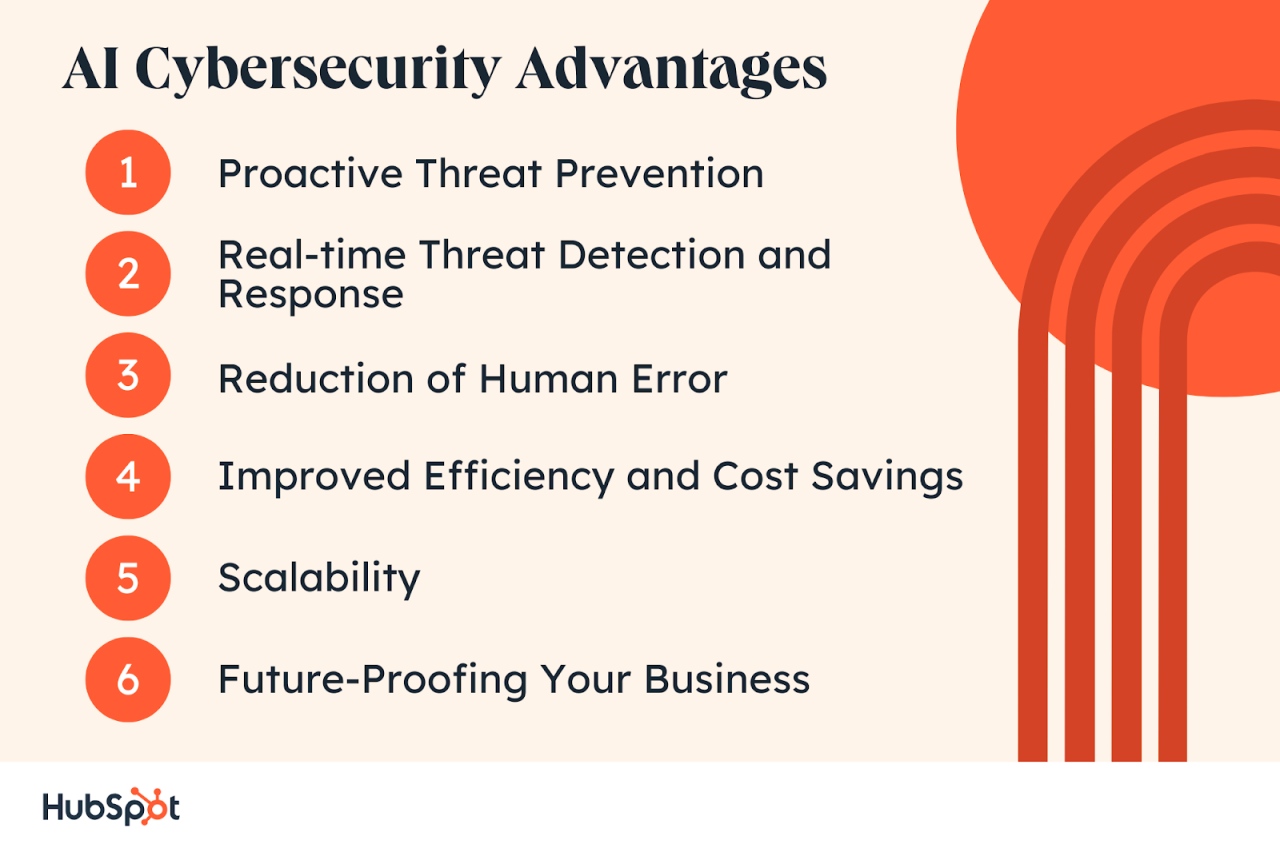
The integration of artificial intelligence into cybersecurity presents a double-edged sword. While AI offers unprecedented capabilities for threat detection and prevention, its deployment raises significant ethical and societal concerns that demand careful consideration. The potential for bias, misuse, and lack of transparency necessitates proactive measures to ensure responsible development and deployment. This section explores these crucial implications.
Bias in AI-Powered Security Systems and Mitigation Strategies
AI algorithms learn from the data they are trained on. If this data reflects existing societal biases, the resulting AI system will likely perpetuate and even amplify those biases. For instance, an AI system trained primarily on data from one geographic region might be less effective at detecting threats originating from other regions, leading to security vulnerabilities. Similarly, biases in datasets could lead to disproportionate targeting of certain user groups.
Mitigation strategies involve careful curation of training datasets to ensure representation from diverse sources and rigorous testing to identify and correct biases. Techniques like adversarial training, which exposes the AI to deliberately biased data to improve its robustness, are also crucial. Regular audits and independent evaluations of AI security systems are vital for ongoing bias detection and correction.
Potential for Misuse of AI in Cyberattacks
The same AI capabilities used for defense can be weaponized for offensive purposes. AI can automate the creation of sophisticated phishing emails, accelerate the discovery of vulnerabilities, and personalize attacks to target specific individuals or organizations with greater effectiveness. For example, AI-powered malware can adapt its behavior to evade detection, making it incredibly difficult to counter. The development of autonomous weapons systems, capable of making decisions without human intervention, presents an even more concerning prospect, potentially leading to unpredictable and catastrophic consequences.
Understanding and proactively addressing these potential misuse scenarios is critical for developing effective countermeasures.
Transparency and Accountability in AI-Driven Security Systems
The “black box” nature of some AI algorithms makes it difficult to understand how they arrive at their decisions. This lack of transparency hinders accountability. If an AI system makes a mistake—for example, falsely flagging a legitimate user as malicious—it can be challenging to determine the cause and rectify the problem. Furthermore, it’s crucial to establish clear lines of responsibility when AI systems make critical security decisions.
Who is accountable if an AI-powered system fails to prevent a major cyberattack? Promoting transparency through explainable AI (XAI) techniques, which aim to make AI decision-making processes more understandable, is essential. Similarly, establishing clear regulatory frameworks for the use of AI in cybersecurity can contribute to greater accountability.
Legal and Regulatory Challenges Related to AI in Cybersecurity
The rapid advancement of AI in cybersecurity outpaces the development of relevant legal and regulatory frameworks. Questions arise concerning data privacy, liability in case of AI-related security breaches, and the appropriate level of human oversight in AI-driven decision-making. Existing laws, such as GDPR and CCPA, address certain aspects of data protection, but the unique challenges posed by AI require new legislation and international cooperation.
The development of clear legal standards for the acceptable use of AI in cybersecurity is crucial to ensure responsible innovation and prevent the exploitation of vulnerabilities.
Ethical Guidelines for the Development and Deployment of AI in Cybersecurity
The development and deployment of AI in cybersecurity must adhere to robust ethical guidelines. These guidelines should prioritize:
- Fairness and Non-discrimination: AI systems should be designed and trained to avoid bias and ensure equitable treatment of all users.
- Transparency and Explainability: The decision-making processes of AI systems should be as transparent and understandable as possible.
- Accountability and Responsibility: Clear lines of responsibility should be established for the actions of AI systems.
- Privacy and Data Security: AI systems should be designed and used in a way that protects user privacy and data security.
- Security and Robustness: AI systems should be designed to be resilient against attacks and misuse.
- Human Oversight: Appropriate levels of human oversight should be maintained to ensure responsible use of AI in cybersecurity.
- Continuous Monitoring and Evaluation: AI systems should be continuously monitored and evaluated for bias, errors, and security vulnerabilities.
AI in Securing IoT Devices
The Internet of Things (IoT) presents a massive security challenge. Billions of interconnected devices, often with limited processing power and security features, create a vast attack surface vulnerable to sophisticated threats. AI offers a powerful toolset to address these challenges, moving beyond traditional security methods and enabling proactive, adaptive security measures.AI’s ability to analyze vast datasets, identify patterns, and learn from experience makes it ideally suited to the unique complexities of IoT security.
The sheer volume of data generated by IoT devices makes manual analysis impossible; AI can automate this process, enabling faster detection and response to threats.
AI-Powered Threat Detection and Prevention in IoT
AI algorithms, particularly machine learning (ML), can analyze network traffic, device behavior, and sensor data to identify anomalies indicative of malicious activity. For instance, an ML model trained on normal network traffic patterns from a smart home device can quickly detect unusual communication patterns, such as a sudden surge in data transfer to an unknown IP address, suggesting a potential compromise.
Similarly, AI can detect unusual sensor readings, such as a smart thermostat reporting unusually high temperatures when no one is home, which could signal a physical intrusion attempt. This proactive approach allows for rapid intervention before significant damage occurs. Examples include intrusion detection systems that use anomaly detection to identify malicious activity and AI-powered firewalls that adapt their rules based on real-time threat intelligence.
AI in Managing Large-Scale IoT Deployments
Managing the security of thousands or millions of IoT devices requires sophisticated tools. AI can automate many security tasks, such as device authentication, vulnerability scanning, and patch management. AI-powered platforms can continuously monitor the security posture of the entire IoT ecosystem, identifying and prioritizing vulnerabilities across the entire network. This centralized approach reduces the burden on security teams and ensures consistent security across all devices.
Consider a large-scale smart city deployment: AI can help manage the security of thousands of interconnected sensors, streetlights, and traffic cameras, automatically detecting and responding to attacks in real-time.
Hypothetical IoT Security System with AI
Imagine a smart home security system incorporating AI. The system uses AI-powered cameras to identify intruders based on facial recognition and behavioral analysis. AI algorithms analyze sensor data from smart locks, smoke detectors, and motion sensors to detect unusual activity and trigger alerts. A central AI platform manages all security components, continuously monitoring for threats and adapting its security posture based on real-time intelligence.
If a suspicious event is detected, the system automatically triggers notifications, adjusts security settings (e.g., locking doors), and potentially even contacts emergency services. This system leverages AI’s capabilities for proactive threat detection, automated response, and adaptive security management.
Comparison of Traditional and AI-Based IoT Security Methods
Traditional IoT security methods often rely on signature-based detection, which is slow to adapt to new threats and ineffective against zero-day exploits. AI-based methods, however, can detect anomalies and patterns that traditional methods miss, providing more proactive and adaptive security. For example, traditional antivirus software might miss a new malware variant targeting a specific IoT device, while an AI-powered system could detect unusual behavior indicative of a malicious infection, even without a known signature.
While traditional methods require significant manual intervention, AI-based systems automate many security tasks, freeing up human resources for more strategic security initiatives. The trade-off is that AI systems require significant data for training and may present challenges related to explainability and bias.
AI and Data Privacy in Cybersecurity
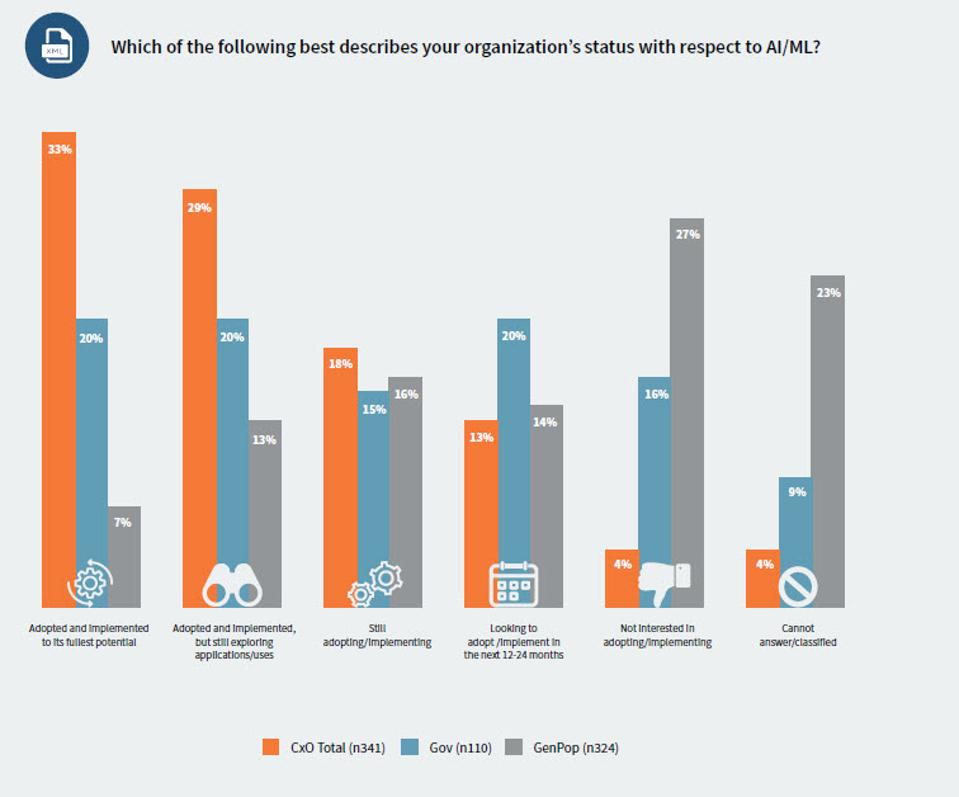
The intersection of artificial intelligence (AI) and data privacy in cybersecurity presents a fascinating paradox. AI’s powerful analytical capabilities offer unprecedented opportunities to enhance data protection, but its very nature – the processing of vast quantities of data – introduces significant privacy risks. This necessitates a careful examination of how AI can be leveraged responsibly to safeguard sensitive information while mitigating potential harms.AI can significantly bolster data privacy and security through various methods.
For instance, AI algorithms can analyze user data to identify and flag anomalous activities indicative of a data breach attempt, far faster and more accurately than traditional methods. Furthermore, AI-powered systems can automate data anonymization and pseudonymization processes, making it significantly harder for malicious actors to identify individuals from compromised datasets. Differential privacy techniques, powered by AI, add carefully calibrated noise to datasets, enabling analysis without compromising individual privacy.
AI’s Role in Enhancing Data Privacy and Security
AI algorithms can be trained on vast datasets of normal user behavior to establish baselines. Deviations from these baselines – such as unusual access patterns or data transfers – trigger alerts, allowing security teams to swiftly investigate and mitigate potential threats. AI can also automate the process of identifying and patching vulnerabilities in software and systems, reducing the attack surface and minimizing the risk of data breaches.
Moreover, AI-powered access control systems can dynamically adjust permissions based on real-time risk assessments, granting or denying access to sensitive data based on user behavior and contextual factors. This adaptive approach ensures that only authorized individuals access sensitive information, at the appropriate time and under appropriate circumstances.
Potential Risks Associated with AI Processing Sensitive Data
Despite its benefits, using AI to process sensitive data carries inherent risks. The AI systems themselves can become targets for attacks, potentially leading to data leakage or manipulation. Moreover, the training data used to develop these systems may contain biases that could disproportionately affect certain groups. There’s also the risk of unintended data disclosure through model inversion attacks, where an attacker attempts to reconstruct sensitive data from the AI model’s outputs.
Finally, the opacity of some AI algorithms (“black box” models) can make it difficult to audit their decisions and ensure they comply with privacy regulations. For example, a facial recognition system, trained on biased data, might incorrectly identify individuals of a certain ethnicity, leading to false accusations or wrongful arrests.
The Regulatory Landscape Surrounding AI and Data Privacy
The regulatory landscape surrounding AI and data privacy is constantly evolving, with jurisdictions globally grappling with the unique challenges posed by AI. Regulations like the General Data Protection Regulation (GDPR) in Europe and the California Consumer Privacy Act (CCPA) in the United States establish frameworks for data protection, but their application to AI systems is still being defined. These regulations often require organizations to demonstrate accountability for their AI systems’ data processing activities, including demonstrating that the systems comply with privacy principles.
The lack of clear, universally accepted standards presents a significant hurdle for organizations seeking to deploy AI in a privacy-compliant manner. Compliance requires a multifaceted approach encompassing legal advice, technological safeguards, and robust data governance practices.
Best Practices for Ensuring Data Privacy When Using AI in Cybersecurity
Implementing robust data governance frameworks is paramount. This involves establishing clear policies and procedures for data collection, storage, processing, and disposal, ensuring compliance with relevant regulations. Employing privacy-enhancing technologies (PETs) like differential privacy and federated learning minimizes the risk of data breaches while allowing for data analysis. Regular security audits and penetration testing are crucial to identify and address vulnerabilities in AI systems.
Transparency and explainability in AI algorithms are also essential to ensure accountability and facilitate auditing. Furthermore, robust employee training programs on data privacy and AI security best practices are crucial. Data minimization, only collecting and processing the data strictly necessary, significantly reduces the risk associated with data breaches.
AI’s Role in Detecting and Preventing Data Breaches
AI can proactively detect and prevent data breaches by analyzing network traffic, user behavior, and system logs for anomalies. Machine learning algorithms can identify patterns indicative of malicious activity, such as unusual login attempts or data exfiltration attempts, enabling security teams to respond quickly and effectively. AI can also automate incident response procedures, such as isolating compromised systems and containing the spread of malware.
Sophisticated AI systems can even predict potential future attacks based on historical data and threat intelligence, allowing organizations to proactively implement preventative measures. For instance, an AI system might detect a surge in phishing attempts targeting a specific department and automatically trigger security awareness training for those employees.
Final Conclusion
The integration of AI into cybersecurity is undeniably reshaping the digital landscape. While offering unprecedented capabilities to defend against sophisticated cyber threats, it also introduces new challenges and ethical dilemmas. Understanding both the opportunities and dangers is paramount. Moving forward, a collaborative approach involving cybersecurity professionals, policymakers, and ethicists is crucial to harnessing the power of AI for good while mitigating its potential for misuse.
Only through proactive measures and ongoing dialogue can we ensure that AI serves as a powerful force for enhancing cybersecurity and protecting our digital future.
Popular Questions: Ai In Cybersecurity Exploring The Opportunities And Dangers
What are some common misconceptions about AI in cybersecurity?
A common misconception is that AI is a silver bullet solution, completely eliminating the need for human intervention. While AI significantly enhances security capabilities, it’s crucial to remember that it’s a tool, not a replacement for skilled cybersecurity professionals. Another misconception is that AI is always unbiased and infallible. AI algorithms are trained on data, and if that data reflects existing biases, the AI system will inherit those biases, potentially leading to flawed security decisions.
How can I prepare for a career in AI-driven cybersecurity?
Focus on developing a strong foundation in cybersecurity principles, complemented by skills in programming, data analysis, and machine learning. Certifications in AI and cybersecurity are valuable, as is practical experience working with AI-powered security tools. Networking within the cybersecurity community and staying updated on the latest advancements in AI and security are also essential.
What are the biggest challenges in implementing AI-based cybersecurity solutions?
Challenges include the need for large datasets to train effective AI models, the potential for adversarial attacks designed to fool AI systems, the high cost of implementation and maintenance, and the difficulty in explaining and interpreting the decisions made by complex AI algorithms (the “black box” problem).



